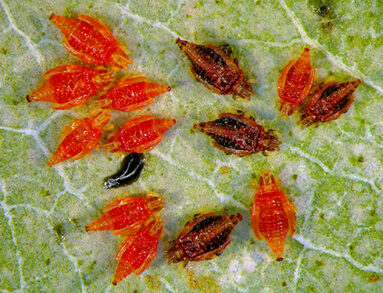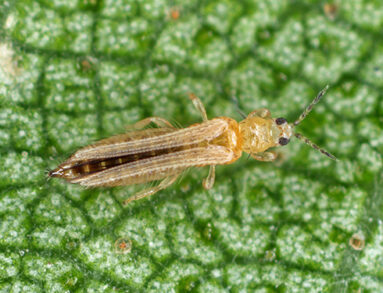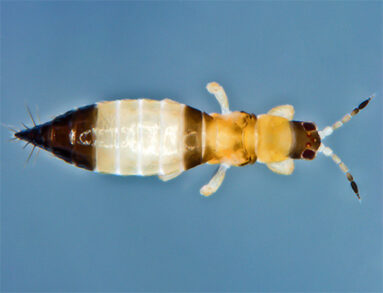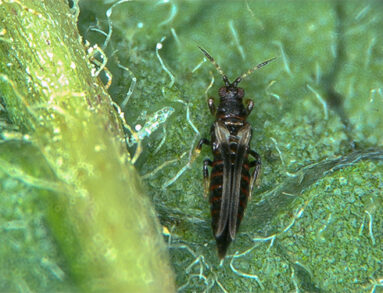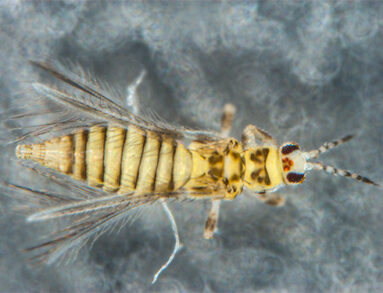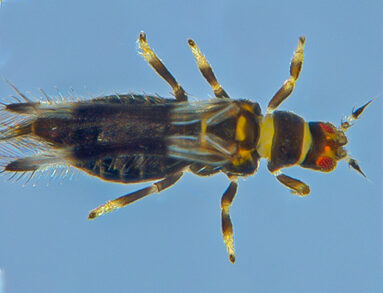THYSANOPTERA
AboutTHYSANOPTERA
Thrips are small to minute insects measuring up to 5.0mm long. The name of the order, Thysanoptera, refers to the unique morphology of the wings, which are narrow, usually without clearly visible veins, and bear a fringe of long hairs on the posterior margin. Some 6,300 species of thrips are known worldwide. Many species are phytophagous (plant feeders) associated with host plants, some are predators of other thrips, and a large group of species feed primarily on fungi. A few species are important pests on ornamentals, and on field and greenhouse crops, causing important damage to plants either by direct feeding on leaves, stems or flowers, or through the transmission of pathogenic viruses. Most pest species of economic importance are not native to Florida. Of the 280 species of thrips reported from Florida only about 60 appear to be relatively recent introductions, including important plant pests such as western flower thrips (Frankliniella occidentalis), chilli thrips (Scirtothrips dorsalis), melon thrips (Thrips palmi) and cacao thrips (Selenothrips rubrocinctus). Others, like Echinothrips americanus or Caliothrips phaseoli, are probably native forms that sometime become pests.
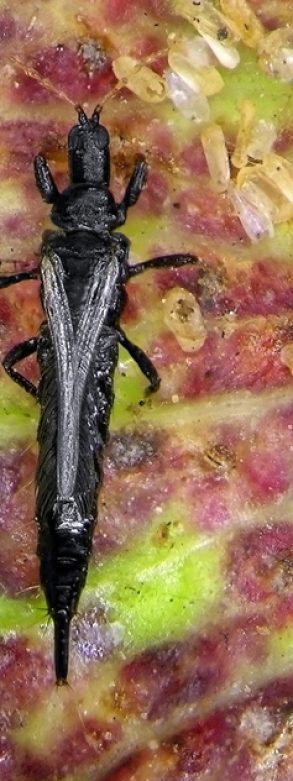
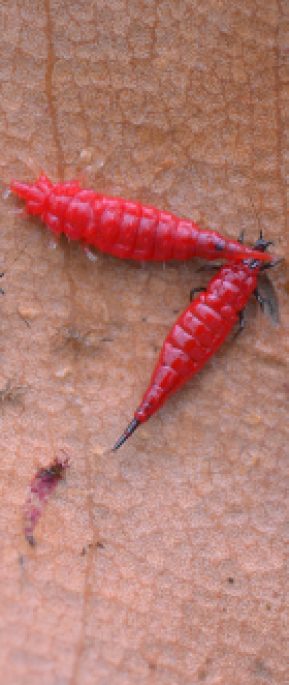
The collection of thrips at the Florida State Collection of Arthropods includes some 39,000 slides and alcohol vials. The bulk of the collection are specimens collected on plants and submitted for identification by DPI and USDA inspectors, or by the public. In addition, the FSCA is the repository of the J. W. Watson collection, one of the most prolific authors on thrips taxonomy at the beginning of the 20th century.
THYSANOPTERA
PHOTO COLLECTION
